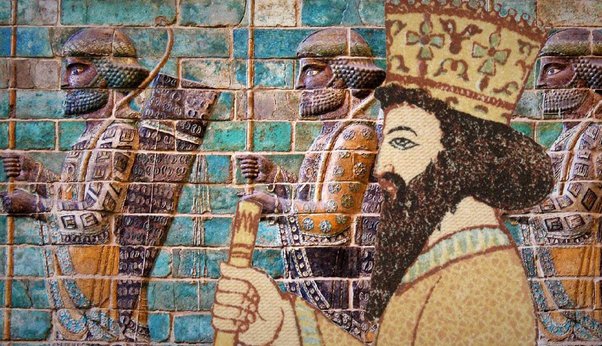
While the bulk of the Sindis moved on to India, some wondered into Kurdistan as early as 2000 BC to give rise to the Mittani royal house and the modern Sindi Kurds.
By Prof. Mehrdad R. Izady
The question of Kurdish origins, i.e., who the Kurds are and where they come from, has for too long remained an enigma. Doubtless in a few words one can respond, for example, that Kurds are the end-product of numerous layers of cultural and genetic material superimposed over thousands of years of internal migrations, immigrations, cultural innovations and importations. But identifying the roots and the course of evolution of present Kurdish ethnic identity calls for a greater effort. It calls for the study of each of the many layers of these human movements and cultural influences, as many and as early in time as is currently possible. And to achieve this, one needs to delve deep into antiquity, and debate notions as diverse as anthropology, linguistics, genetics, theology, economics and demography, not to mention simple old narrative history.
Presently, at least 5 distinct layers can be identified with various degrees of certainty, as explored below:
Halaf Cultural Period, Ubaid Cultural Period, Hurrian Cultural Period, Aryan Period and Semitic and Turkic Periods.
Here is the excerpt from the research paper of Prof. Mehrdad R. Izady
The Aryan Period
As early as 2000 BC, the vanguards of the Indo-European speaking tribal immigrants, such as the Hittites and the Mittanis (Sindis), had arrived in southwestern Asia. While the Hittites only marginally affected the mountain communities in Kurdistan, the Mittanis settled inside Kurdistan around modern Diyarbakir, and influenced the natives in several fields worthy of note, in particular the introduction of knotted rug weaving. Even rug designs introduced by the Mittanis and recognized by the replication in the Assyrian floor carvings, remain the hallmark of the Kurdish rugs and kelims. The modern mina khâni and chwar such styles are basically the same today as those the Assyrians copied and depicted nearly 3000 years ago.
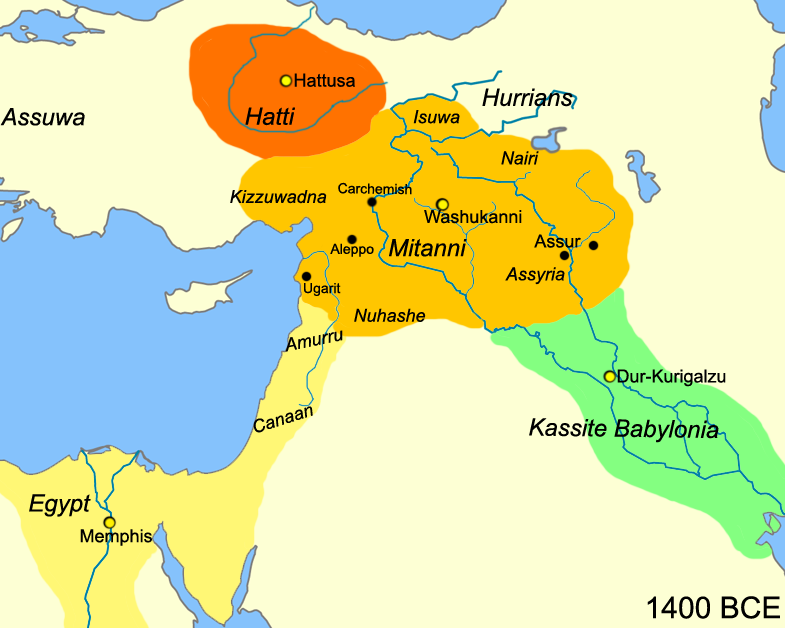
The name ‘Mittani’ survives today in the Kurdish clans of Mattini and Millani/Milli who inhabit the exact same geographical areas of Kurdistan as the ancient Mittani. The name “Mittan” itself, however, is a Hurrian name rather than Aryan. At the onset of Aryan immigration into Kurdistan, only the aristocracy of the high-ranking warrior groups were of the Aryan migrants, while the bulk of the people were still Hurrian in all manners. The Mittani aristocratic house almost certainly was from the immigrant Sindis, who survive today in the populous Kurdish clan of Sindi—again—in the same area where the Mittani kingdom once existed. These ancient Sindi seem to have been an Indic, and not Iranic group of people, and in fact a branch of the better known Sindhi people of India-Pakistan, that has imparted its name to the River Indus and in fact, the name India itself. While the bulk of the Sindis moved on to India, some wondered into Kurdistan to give rise to the Mittani royal house and the modern Sindi Kurds. Others, still, remained in Europe, and are recorded in the 1st century AD inhabiting the Taiman Peninsula in the Kuban on the Sea of Azov between the modern Russia and Ukraine.
Expectedly, the Mittani pantheon includes names like Indra, Varuna, Suriya and Nasatya is typically Indic.
Expectedly, the Mittani pantheon includes names like Indra, Varuna, Suriya and Nasatya is typically Indic. The Mittanis could have introduced, during this early period, some of the Indic/Vedic tradition that appears to be manifest in the Kurdish religion of Yazdanism.
The avalanche of the Indo-European tribes, however, was to come about 1200 BC, raining havoc on the economy and settled culture in the mountains and lowlands alike. The north was settled by the Haigs who are known to us now as the Armenians, while the rest of the mountains became targets of settlement of various Iranic peoples, such as the Medes, Persian, Scythians, Sarmatians, and Sagarthians (whose name survives in the name of the Zagros Mountains. Taurus Mountains’ name, on the other hand, is Aramaic, “Tur,” which simply means ‘mountain’).
By 850 BC, the last Hurrian states had been extinguished by the invading Aryans, whose sheer number of immigrants must have been considerable. These succeeded over time to change the Hurrian language(s) of the people in Kurdistan, as well as their genetic make-up. By about the 3rd century BC, the Aryanization of the mountain communities was virtually complete.
Since the star of the Mittani shown brightest in 1500 BC, Aryan dynasties of various size and influence continued their appearance in various corners of Kurdistan. None, however, was to match, and in fact surpass the Mittanis as the Medians. The rise of the Medes from their capital at Ecbatana (modern Hamadan) in 727 coincided with the fall of the last major Hurrian kingdom: the Mannaeans. Ignoring the proud legacy of the Hurrian states and even the Aryan empire of the Mittanis which can squarely be claimed by on every ground by modern Kurds, it is the Medes that the Kurds have grown most fund of. Medes are claimed regularly by the Kurds and pronounced by others to be the ancestors of them. This is strange, when realizing how many millennia of cultural and ethnic evolution preceded the rise of Medes into Kurdistan. In reality, Medes are no more the ancestors of the modern Kurds as all other Halafian, Hurrian and Mittani who came before them or the legion of other peoples and states that came after them. Nonetheless, today, even the first Kurdish satellite television transmitter is given the name “Med TV” (Kurdish for “Median” TV). Fascination of the Kurds with the Median Federation (a.k.a., Empire) that ended in 549 BC remains supreme, indeed.
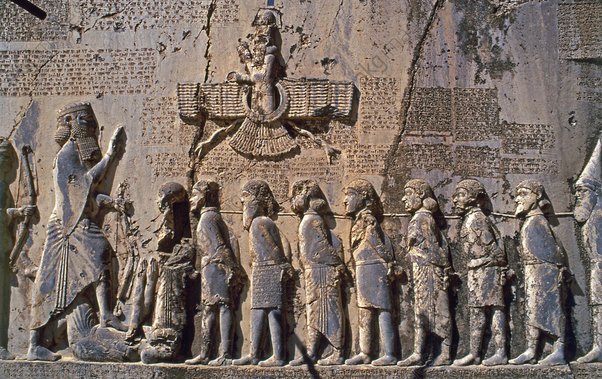
It is surprising to most that among the Kurds the Aryan cultural was and still remains secondary to that of the Hurrians. Culturally, Aryan nomads brought very little with to add to what they found already present in the Zagros-Taurus region. As has been the case, cultural sophistication and civilization are not what nomads are known for. On the contrary, nomads are inclined to annihilate what settled life and culture they find in their path as adversaries for possession of land and political dominance. We have no ample evidence, including a bona fide economic dark age lasting for roughly 500 years in the areas touched by the Aryans, that they behaved much the same barbarian way.
The Aryan influence on the local Hurrian Kurdish people must have been very similar to what transpired in Anatolia 2,500 years later when the Turkic nomads broke in after the battle of Manzikert in AD 1071. Much insight can be learned from this more recent nomadic dislocation for the older, murkier Aryan episode. Following the Manzikert, the Turkic nomads gradually imparted their language to all the millions of civilized, sophisticated Anatolians whom they converted from Christianity to their own religion of Hanafi Sunni Islam. Almost everyone in Anatolia gradually assumed a new Turkish identity when converted into Islam. But, this did not mean that the old cultural, human and genetic legacy ceased to exist. On the contrary, the rich and ancient Anatolian cultures and peoples continued their existence under the new Turkish identity, albeit, with the addition of some genetic and cultural material brought over by the nomads.
Architecture, domestic and monumental, decorative arts, farming techniques, herding practices, and religion remained much the same in Kurdistan following Aryan settlement, while the people progressively came to speak the Indo-European, Iranic language of these Aryan immigrants, admit new deities into their earlier Hurrian pantheon, and become lighter in their complexion. No abrupt change is encountered in the culture of Kurdistan while this linguistic and genetic shift was taking place under the Aryan pressure, barring the appearance of the so-call, “gray ware” pottery.
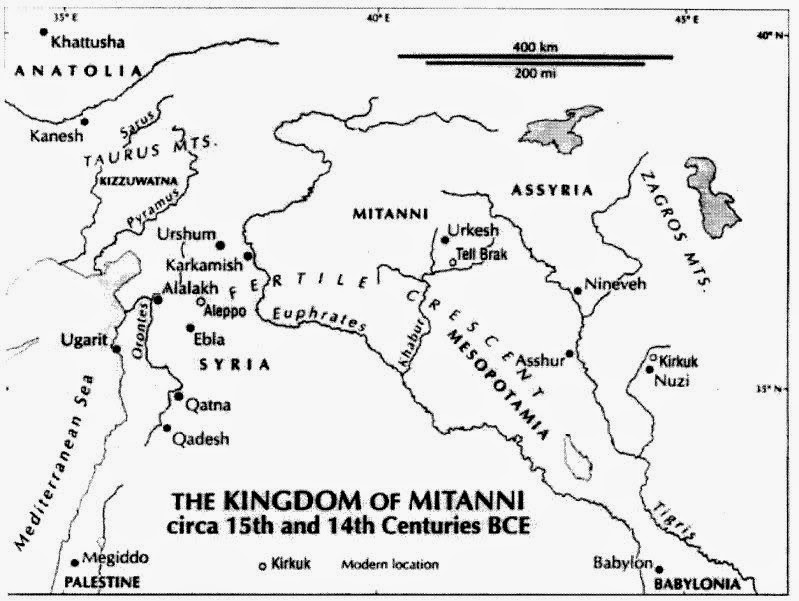
Nearly everything in the contemporary culture of the Kurds can be traced to this massive Hurrian substructure, with the Aryan superstructure generally quite superficial and “skin deep”—to use a pun, in many fundamental ways. Even the time-honored Kurdish tactic of guerrilla warfare finds its roots among the Hurrian Gutis long before it was put into good use as a well-tested and developed tactic by the Median Cyaxares in this Assyrian campaigns in 612 BC. In the Bisitun inscription, the Persian king Darius I also makes note of this battle tactic used by the mountaineers against his forces, calling the guerrillas the kara (a lexical cognate of the term, “guerrilla”). Eight hundred years later, King Ardasher, founder of the Persian Sasanian dynasty, faces the same defensive tactics by the Kurds. The term he uses for them is jan-spâr, which is almost identical in meaning with the modern term Kurds give their guerrilla warriors: the peshmerga.
So far the victory cylinder of the Assyrian king Tiglath-pileser I (r. 1114-1076 BC) is the oldest record of the incidence of the ethnic name of the Kurds. It records the “Kurti” or “Qurtie” among the peoples whom the king conquered in his mountain campaigns south of the Lake Van region. The more exact location of these “Kurti” is given by the same document as Mt. Azu/Hazu. We are extraordinarily lucky that this “address” was still current until about sixty years ago—over 3100 years after Tiglath-pileser I. The town of Kurti in the Mt. Hizan region south of Lake Van is the same as the “Kurti in the Mt. Azu” of the Assyrians! The town of Kurti was still serving as a seat of a Kurdish princely house when the Kurdish historian Sharaf al-Din Bitlisi added the dynasty’s history into his celebrated history, the Sharafnâma, in 1597. This “birthplace” of the Kurds continued to be known with the archaic name until the Turkish government changed its official name and that of its eponymous river to the Turkish, Bahçesaray in the 1930s. The oldest Kurdish place name—it “birth place” thus joined history, and so recent in history.
The Akkadian term “Kurti” denoted vaguely and indeterminate portion or groups of inhabitants of the Zagros (and eastern Taurus) mountains. To their very end in the 6th century BC, on the other hand, the Babylonians loosely (and apparently pejoratively) called most everybody who lived in the Zagros-Taurus system a “Guti”, including the Medes! But Babylonian records also attest to many more specific subdivisional names such as the Mardi, Kardaka, Lullubi and Qardu, the last three of which have all been used frequently in the needless controversy over the roots and antiquity of the ethnic term ‘Kurd,’ and the question of the presence of a general ethnic designator.
By the 3rd century BC, at any rate, the very term Kurd (or rather “Kurti”) had been conclusively established. Polybius (d. ca. 133 BC) in his history when reporting on the events of 221-220 BC, and Strabo (d. ca. AD 48) in his geography (footnote 10) are the earliest Western sources I am aware of to have made mention of the Kurds with their present ethnic name, albeit, in latinized form Cyrtii, “the Kurti.” Historians Livy, Pliny, Plutarch, and much later, Procopius also mention this ethnic name for the native population of Media and parts of Anatolia for the classical times. Ptolemy inadvertently provides us with an array of Kurdish tribal names, when he records them as they appear as toponyms for where the tribe resided. Bagraoandene for the Bagrawands or Bakrans of Diyarbakir, Belcanea for the Belikans of Antep, Tigranoandene for the Tigranawand/Tirigans of Hakkari, Sophene for the Subhans of Elazig, Derzene for the Dersimis and Bokhtanoi for the Bokhti (Bohtans) etc. These Kurdish tribes are still with us today.
Indic Mitannis, like the earlier Hurrian Mannas, Lullus, Saubarus, Kardakas, and Qutils, had been totally absorbed into a new Kurdish ethnic pool.
When the Aryan Medes and Persians arrived on the eastern flanks of the Zagros around 1000 BC, a massive internal migration from the eastern Taurus and northern and central Zagros toward the southern Zagros was in progress. By the 6th century BC, many large tribes which we now find among the Kurds were also present in southern Zagros, in Fars and even Kirman. As early as the 3rd century BC, the “Kurtioi” are reported by the Greek, and later Roman authors (in the Latin form of “Cyrtii”) to inhabit as much the southern Zagros (Persis or Pars/Fars) as the central and northern Zagros (Kurdistan proper). This was to continue for another millennium, by which time, the ethnic name of “Kurd” had become established for nearly all if not all inhabitants of the mountains, from the Straits of Hormuz to the heart of Anatolia. Northern Zagros and Anatolia once teamed with various and related groups of people speaking Iranic tongue(s). By about 2000 years ago, many of these, such as the Iranic Pontians, Commagenes, Cappadocians, the western Medes and the Indic Mitannis, like the earlier Hurrian Mannas, Lullus, Saubarus, Kardakas, and Qutils, had been totally absorbed into a new Kurdish ethnic pool. These are among many mountain-inhabiting peoples whose assimilation has formed genetically, culturally, socially and linguistically the contemporary Kurds. The Kurdish diversity of race, tradition and spoken dialects encountered today point to the direction of this compound identity.
Reflecting on the gradual and organic assimilation of one of these groups into the larger Kurdish ethnic pool, Pliny the Elder (d. AD 79) tries to reconcile what appeared to him to be rather a name-change for a familiar people. Enumerating the nations of the known world, he states, “Joining on to Adiabene [The Hadhabani/Hazabani, i.e., central Kurdistan centered on Arbil] are the people formerly called the Carduchi [the Kardukh] and now the Cordueni past whom flows the river Tigris…”
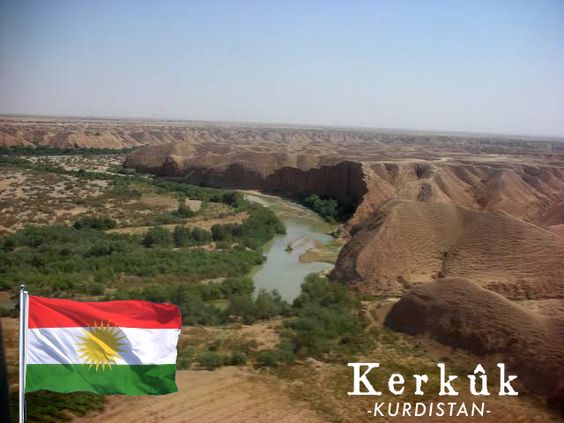
These Carduchi mentioned by Pliny are the same people whom Xenophon and his fellow ten thousand Greek troops had encountered nearly three centuries earlier when retreating through Kurdistan in 401 BC. Xenophon called them the “Kardukhoi” The location and name is the same as that of ‘Kardaka,’ (the people who provided a part of the Babylonian royal guards before 530 BC), and the ‘Qarduim’ (mentioned frequently in the Talmud). The terminal suffix, “khi/khoi” is, Armenian suffix in origin, meaning “that of”. This may imply that Xenophon must have heard the name from an Armenian guide/soldier accompanying him and his troops, rather than hearing it from the resisting Kurds themselves.
The early Islamic sources enumerate tens of Kurdish tribes and family clans outside Kurdistan proper in the southern Zagros, the Caucasus, Elburz, Taurus and Amanus Mountains. In time, however, all of these assimilated into the local. This fact has been an unwarranted source of puzzlement for many modern writers on Kurdish history. Unaware of the history and extent of early Kurdish migrations and finding, at present, very few Kurds in these other mountain areas, they have often drawn the wrong conclusion that the term “Kurd” could not have been an ethnic name but rather a designator for all mountain nomads in general. This facile hypothesis is hardly worthy of refutation, realizing that no such doubt is cast on any other mobile nations such as the Turks and the Arabs who have spread and contracted periodically over thousands of miles of territory.
From the time the Kurds are Aryanized until the 16th century of our era, the layering of Kurdish culture remained basically unchanged, despite introduction of new empires, religions, and immigrants. The Kurds remained primarily followers of the ancient, Hurrian religion of Yazdanism, spoke an Iranic language that the medieval Islamic sources termed Pahlawani. Today, Pahlawani still survives in the dialects of Gurani and Dimili/Zazaki on the peripheries of Kurdistan. Only the loss of the Kurds inhabiting southern Zagros through their metamorphosis into Lurs, Bakhtiyari, Mamsani, Gelu et al, and a fresh expansion of Kurds into Elbruz and Pontus mountains that are noteworthy events.
[Footnote: What is known to the west as River Indus, is River Sindh to the natives of the Indian Subcontinent. Southern third of Pakistan is still the realm of the Sindhi people and is known by that name. The name “India” is, meanwhile, derived from Sindh through the Old Persian conversion of the initial letter sto h(a common practice in that language), to produce Hind. The ancient Greeks, meanwhile, took up this Persian rendition of the name (i.e., Hind), and dropped the initial letter h (as is common in that language), coming up with name “Ind,” plus the Greek suffix us, to get “Indus”.]
______________________
 Mehrdad lzady was born in 1963 to a Kurdish father and a Belgian mother. He spent much of his youth in Iraq, Iran, Afghanistan and Korea as his diplomat parents moved from one assignment to another. He is one of the most prominent native Kurdish historians of our time. Izady finished his BA degree in History, Political Science and Geography at Kansas State University in 1976. His passion for history and geography allowed him to finish a master’s degrees in Geography in 1978, Political Science and International Relations in 1979 at Syracuse University as well as Middle Eastern Languages and Civilizations at Columbia University 1986. He continued his academic career in research at Columbia University, where he completed his PhD at the department of Middle Eastern Languages and Civilizations in 1992. Izady has lectured in the Department of Near Eastern Languages, and Civilizations at Harvard University. He has taught at various American and European institutions such as Harvard University (1990-95), Smithsonian Institution (Washington, 1996), Uppsala University, (Sweden, 1997), Free University of Berlin (Germany, 1998), and He has been teaching in the Department of History at Fordham University and Pace University since 2001. Izady has lectured widely and testified before two US, Congressional subcommittees on the Kurds. He has published extensively in the Kurdish Times as well as The Middle East Journal. He has also contributed to the Encyclopedias of Asian History and has published maps on the distribution of Kurds.
Mehrdad lzady was born in 1963 to a Kurdish father and a Belgian mother. He spent much of his youth in Iraq, Iran, Afghanistan and Korea as his diplomat parents moved from one assignment to another. He is one of the most prominent native Kurdish historians of our time. Izady finished his BA degree in History, Political Science and Geography at Kansas State University in 1976. His passion for history and geography allowed him to finish a master’s degrees in Geography in 1978, Political Science and International Relations in 1979 at Syracuse University as well as Middle Eastern Languages and Civilizations at Columbia University 1986. He continued his academic career in research at Columbia University, where he completed his PhD at the department of Middle Eastern Languages and Civilizations in 1992. Izady has lectured in the Department of Near Eastern Languages, and Civilizations at Harvard University. He has taught at various American and European institutions such as Harvard University (1990-95), Smithsonian Institution (Washington, 1996), Uppsala University, (Sweden, 1997), Free University of Berlin (Germany, 1998), and He has been teaching in the Department of History at Fordham University and Pace University since 2001. Izady has lectured widely and testified before two US, Congressional subcommittees on the Kurds. He has published extensively in the Kurdish Times as well as The Middle East Journal. He has also contributed to the Encyclopedias of Asian History and has published maps on the distribution of Kurds.
Courtesy: Kurdistanica (Posted on 11/10/2018)